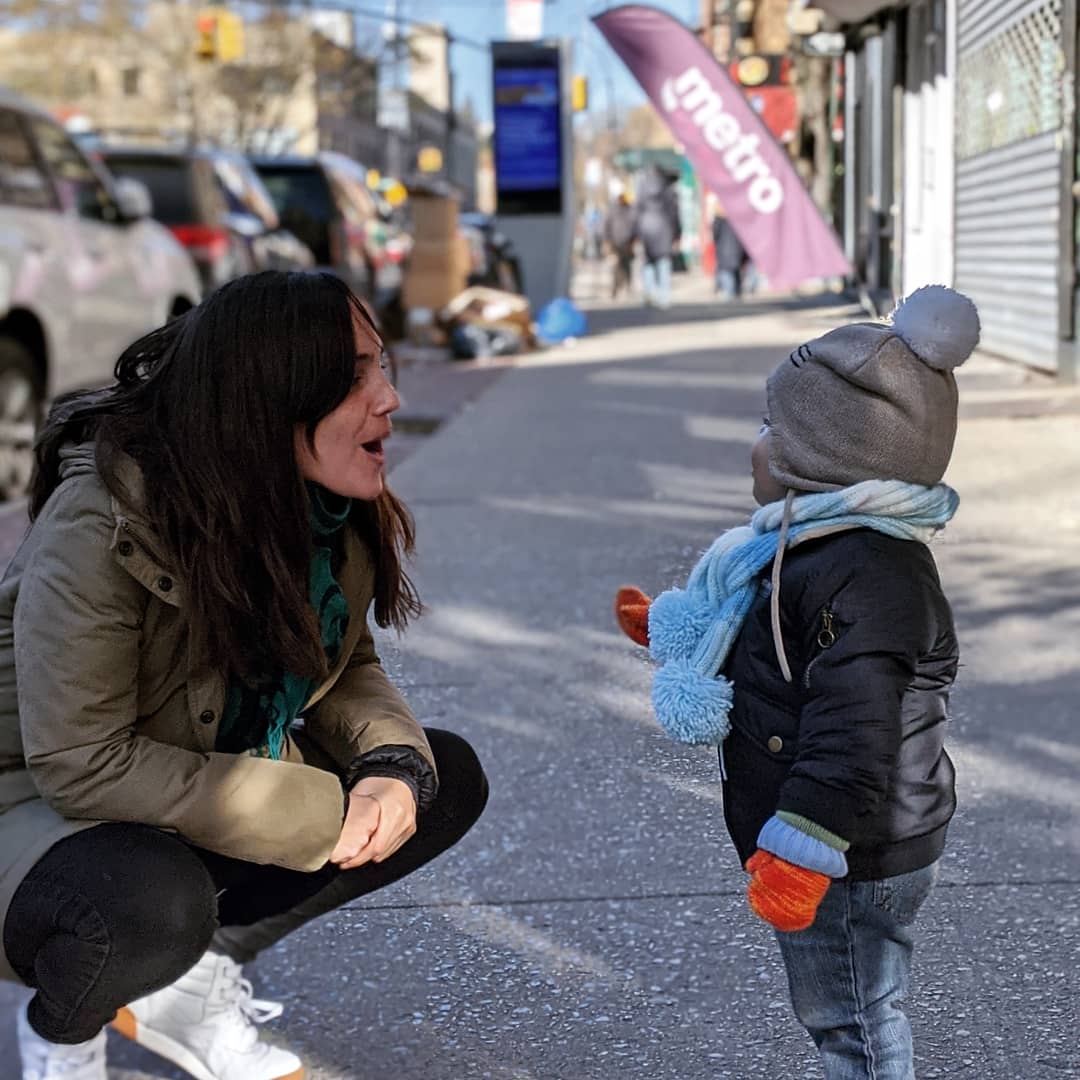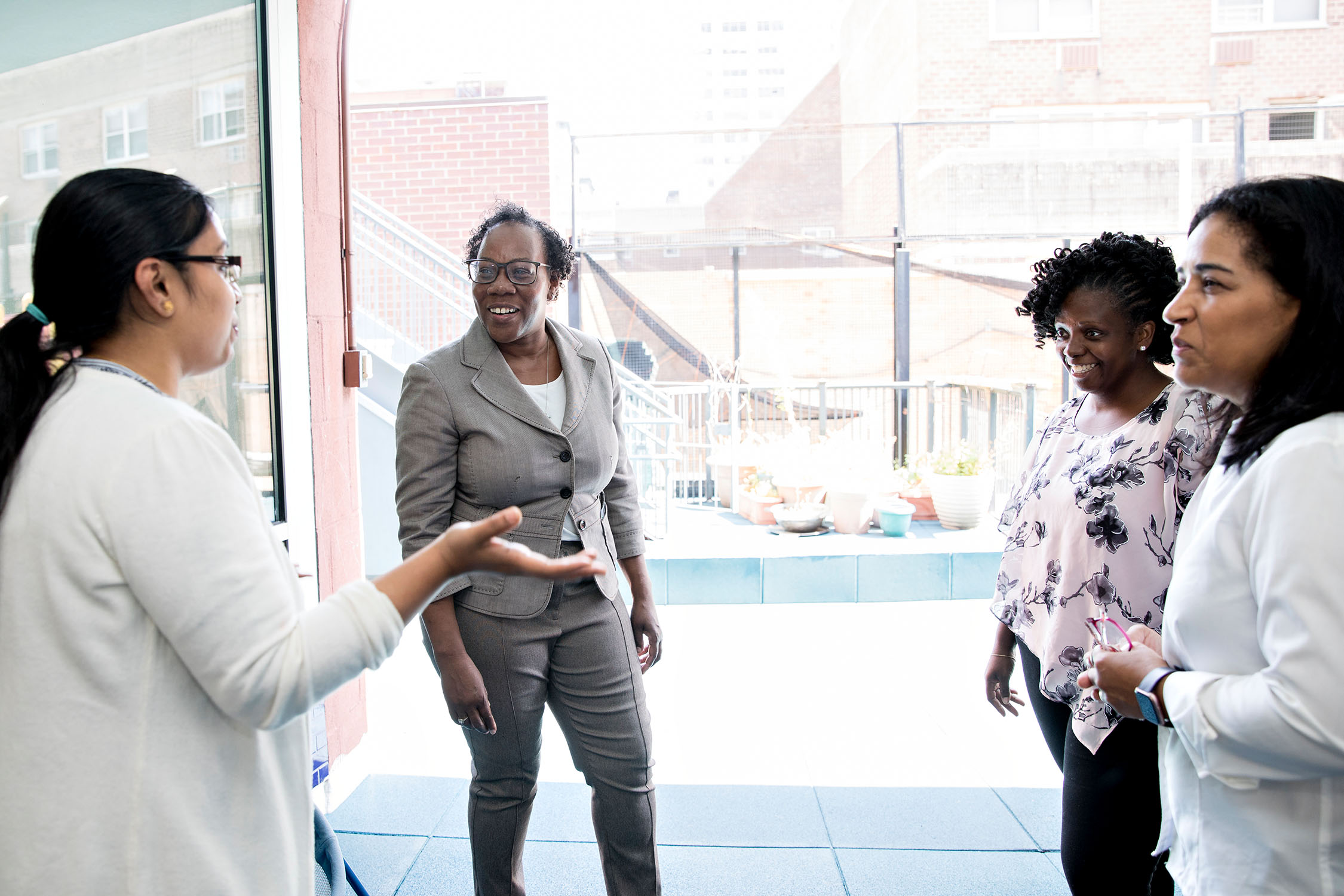I personally cannot translate every great resource I find and I feel like my multilingual families are missing out. But I’m also not the greatest Spanish reader myself and cannot go through lots of pages trying to find good resources in Spanish. – Workforce Survey Participant
The New York Early Childhood Professional Development Institute in partnership with the Bank Street College of Education recently completed a survey to understand the impact of the COVID-19 pandemic on New York’s early childhood workforce. The survey included early childhood program leaders, teachers, and family child care providers. Over 3000 individuals who are members of the state’s Aspire Registry responded. The survey sought to provide a descriptive snapshot of the workforce during the pandemic in order to stimulate dialogue to help as the field navigates this crisis.
The responses in this report mirrored the common threads in themes and feelings that have been raised by early care and educator providers around the country as they navigate remote learning during the COVID-19 pandemic. One of the themes that emerged was how to best support the particular needs of emergent multilingual children and their families.
All educators at all programs must share a commitment to support multilingualism as a strength. Early learning programs are most successful when teachers build on children’s linguistic knowledge and cultural understandings of curriculum, yet teachers struggle to find developmentally appropriate or culturally responsive and sustaining resources. As demonstrated in the quote above, this challenge came to the forefront during the pandemic, as educators scrambled to identify or create multilingual materials in order to partner remotely with families.
In response to the issues raised by the workforce survey, we brought emergent questions to professional learning conversations and surveyed early childhood dual language educators. We have synthesized salient recommendations, resources, and other materials here:
-
- Build relationships. Whether you are a mono-lingual or multilingual educator, learning is only successful when we start by getting to know families. Educators promote two-way communication to establish trust and respect. Find the best way to communicate with each other, and be sure you are available during some nontraditional hours to accommodate working parents. Spending time building relationships with families allows educators to understand the process of learning a new language, not only for the child, but also for the other family members
Invite families to build on their linguistic strengths. Educators may welcome families to send pictures or videos of weekend activities, send songs that children can dance to, or share recipes and books in their home language. Build a multilingual classroom community by inviting families to do activities or send materials in the language they feel most comfortable using. All children learn new vocabulary words as they hear words paired with images in a familiar or unfamiliar language.
2. Use a home language survey. Educators are encouraged to share a survey when children enroll in their program, and, given the unique circumstances of remote learning, it may be beneficial to send a follow-up to collect more information about the children and families’ language modeling at home– what are the language(s), how often are they used, and in which contexts? Please see the NYSED Emergent Multilingual Learner Protocol and Profile which is available in 24 languages.
3. Lean into discomfort, keep an open mind. In a state where over 600 languages are spoken, we will encounter times when we will not know many words in a given language. This can create feelings of discomfort and may make us feel less confident in our ability to support children and families. Educators may feel vulnerable or fearful that they may be judged for the extent of their language abilities and may not have had a chance to unpack their identities as emerging multilingual learners themselves. However, by leaning into this discomfort, one can open possibilities to engage, learn, and build on existing practice. When educators take risks and are intentional learners, this opens the door to building reciprocal, equitable relationships with children and families.
Go ahead and lean into your entire language repertoire and utilize all the language tools you have access to. One of the most common ways of doing this is by committing to learning key words and common phrases in a new language. Doing so communicates that we are all responsible for working to understand one another and demonstrates that a child’s home language is valued.
4. Identify multilingual resources
-
- Colorín Colorado – A bilingual literacy website for families and educators.
- Wide Open School – Resources for educators and families. Get-Moving -English movement and physical activities for young children. When videos are in another language, the visual component can help the child to engage and follow the activity. Weekly Spanish Activity – Wide Open School provides weekly Spanish activities for children and their family.
- Zero to Three has a page of resources in Spanish for educators and families for infants and toddlers: Cero a Tres.
- The Fable Cottage – Fairy Tales narrated in Spanish, French, German and Italian.
- Audible Stories – Children’s audiobooks narrated categorized by age groups in multiple languages for free.
- 5 Principios – Spanish resource about child development for families and teachers of young children 0-3 years old.
- Supporting Multilingual Learners and English Language Learners – Translated materials and resources compiled the NYC Department of Education, ranging from multilingual technology support, translation services, community resources, educational resources to support children’s language at home, etc. Core Principles for Supporting Emergent Multilingual Learners – The NYC Department of Education’s Core Principles outline the beliefs and practices that support high-quality instruction for emergent multilingual learners.
- New York Public Library – NYPL offers early literacy activities in Spanish, French, Bengali, and Chinese for educators and parents to explore. In remote learning, they also offer multilingual storytelling videos.
- Development and Research Early Childhood Mathematics Education (DREME) – Math activities and resources in Spanish for young children 3-5 years old.
Read the full report: New York Early Care and Education Survey: Understanding the Impact of COVID-19 on New York Early Childhood System
What has been your experience supporting multilingual children and families during remote learning? What are some lessons or strategies you have learned and would like to share?
Ivonne Monje and Tatiana Bacigalupe are screening and assessment specialists at the Institute.


